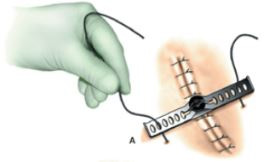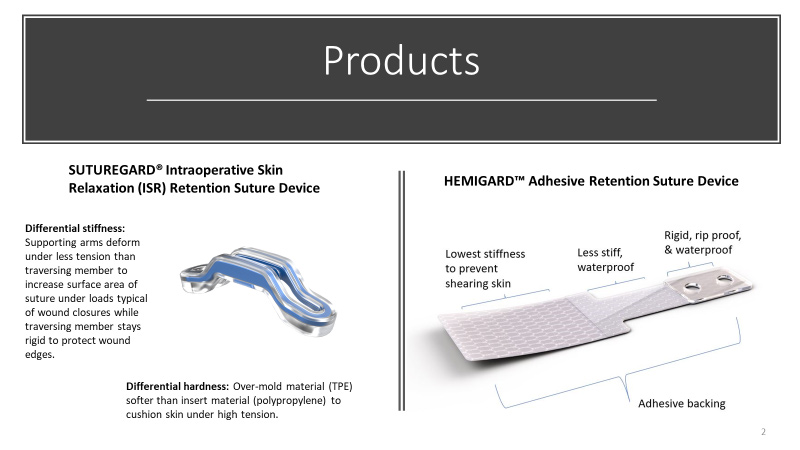We all become accustomed to the status quo. I worked in a hospital system where our Chief Surgeon was told during his training to accept a 10-15% infection rate for colon resection surgery. He was told “you are operating on a contaminated structure, that is just the way it is”. Well, the hospital joined a national registry (National Surgical Quality Improvement Program or NSQIP). We found our infection rate for colon surgery was in fact a high outlier. This was a call to action, and after implementing multiple evidence based steps to limit infection, our rate was reduced to below 4%. Could we reexamine suture retention bridges in the same way?
Surgeons use suture retention bridges to cushion heavy gauge sutures for support of high tension incision closures. High tension sutures compress the encircled tissue radially inward and the force can injure the encircled tissue. The greater the force, the more restriction of blood flow into that living tissue and the greater the direct mechanical injury from tearing force.
Suture retention bridges support the primary closure and reduce the risk of wound dehiscence. Ethicon was the traditional product leader, and the bridge they manufactured until recently (discontinued in 2017) was the same device I was trained on over 30 years ago. It was a clear/yellow stiff plastic platform with multiple holes for passing a suture with a clever capstan mechanism for tightening or loosening the suture as needed. The platform dispersed the downward suture pressure exerted by the suture but itself was often harmful to the skin. Many improvements in skin friendly materials arrived since, but that same design was never modified, and most of us who used these Ethicon bridges would place gauze or foam pads underneath the plastic bridge to limit pressure induced skin injury caused the device.

Suturegard Medical has worked hard to improve and make the best suture retention bridges in the world. Our first bridge, the SUTUREGARD ISR (intraoperative skin relaxation) consists of an injection molded flexible polypropylene insert, covered with a soft spreadable overmolded gel (Tetrapolyethylene or TPE). SUTUREGARD ISR is a refinement of preexisting suture retention bridge design which dealt with downward pressure dispersal. First, we used materials which are flexible and spreadable to allow optimal dispersal of downward force. Second, we use a slotted aperture with an elevated bridge that allows the piercing suture to slide and create a favorable exit angle that is not cutting down and into the skin. SUTUREGARD ISR is the product of 12 prototypes, all of which aimed toward the goal of optimally dispersing suture pressure and preventing skin injury. It disperses suture tension with snowshoe like feet which spread the force at the suture skin entry points radially along the skin surface. This design allows surgeons to apply high tension to their sutures and stretch skin quickly and safely without skin injury.
HEMIGARD represents a true breakthrough in suture retention bridge design. It works in a completely novel way. HEMIGARD is the world’s first suture retention bridge which is adhesive based and disperses high suture tension horizontally over a broad surface to prevent skin injury. HEMIGARD is divided into 3 zones. The first zone closest to the wound has a rigid polyethylene insert that does disperse downward suture pressure, but the second and third zones further away from the wound spread the inward suture pressure horizontally over its’ broad surface area. This three zone variable stiffness design also makes HEMIGARD effectively a spring that can withstand high pressure at the leading edge without traumatizing skin at the trailing edge. The leading edge insert also elevates the crossing suture slightly above the skin plane, and this allows the surgeon to leave HEMIGARD in place to support the wound with little chance of “track marks”. HEMIGARD allows surgeons to successfully repair wounds in thin fragile skin that normally tears with conventional suture technique.

We hope you find these devices helpful in managing your challenging wound closures and enjoying better outcomes for your patients!
Dan Ladizinsky, MD